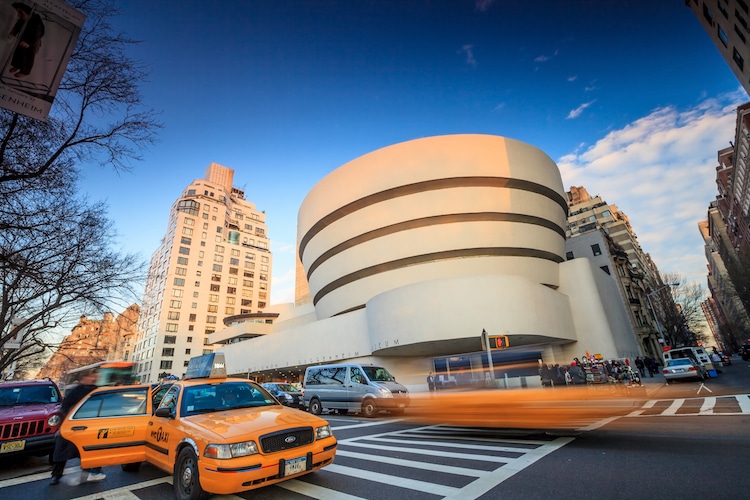상징적 건축물이 있는 세계 7대 박물관 VIDEO: 7 Museums With Iconic Architecture Everyone Should Recognize
7 Museums With Iconic Architecture Everyone Should Recognize
By Kelly Richman-Abdou on November 14, 2018
For centuries, the museum has remained one of the most important cultural institutions. On top of preserving and presenting art, artifacts, and other objects, many museums are also known for their educational programs, engaging entertainment, and world-class architecture.
Famous Museum Architecture
상징적 건축물이 있는 7대 박물관 수세기 동안 박물관은 가장 중요한 문화 중 하나로 남아 있었다. 예술, 공예품, 그리고 다른 물건들을 보존하고 전시하는 것 외에도, 많은 박물관들은 교육 프로그램, 흥미 있는 오락, 그리고 세계적인 수준의 건축물로도 알려져 있다. 전 세계적으로 수많은 아름다운 디자인 박물관이 존재하고 있지만, 우리는 세계에서 가장 유명한 건축물을 가진 7개의 최첨단 사례들을 선택했다. 전세계의 유명한 박물관의 놀라운 건축물들을 탐험해보자. 황기철 콘페이퍼 에디터 큐레이터 Ki Cheol Hwang, conpaper editor, curator |
edited by kcontents
While countless beautifully designed museums exist across the globe, we’ve selected seven state-of-the-art examples whose architecture is among the most famous in the world.
Explore the amazing architecture of these famous museums around the world.
THE LOUVRE 파리 루브르 박물관
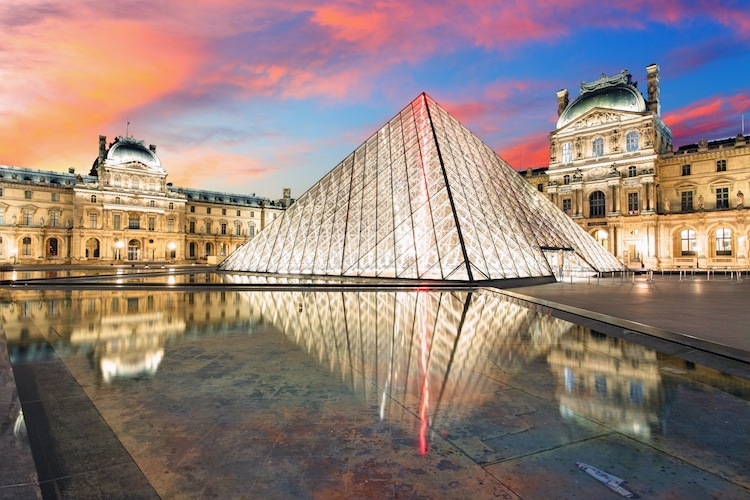
The Louvre Pyramid (Photo: TTstudio via Shutterstock)
Paris’ Louvre Museum is one of the most famous examples of old-meets-new architecture. Its world-class collection of ancient to 19th-century art is housed in a former French Renaissance-style palace whose wings wrap around two large courtyards. Within one of these courtyards is the Louvre Pyramid, a contemporary glass-and-steel structure.
In 1983, President François Mitterrand commissioned Chinese American architect I.M. Pei to design a new entrance to the museum. Pei, whose prior projects included the National Gallery of Art’s East Building and John F. Kennedy Library in Massachusetts, proposed a 71-foot pyramid that would bring guests to a luminous underground lobby. His concept was approved and construction was completed in 1989.
The Louvre’s lobby
Since then, the Louvre Pyramid has become a universally understood symbol of the popular museum.
THE SOLOMON R. GUGGENHEIM MUSEUM
On top of its jaw-dropping collection of modern and contemporary art, The Solomon R. Guggenheim Museum in New York City’s Upper East Side is famous for its Frank Lloyd Wright-designed building.
Like other Wright creations, the Guggenheim showcases the architect’s interest in organic shapes and forms. Unlike the sharp rectangles of the buildings that surround it, the museum features a round silhouette separated into tiers. This aesthetic is echoed by the building’s open-plan atrium, which is framed by a spiraling, shell-inspired ramp and topped with a spider web-like skylight.
Wright was approached with the project in 1943. Fifteen years and 200 sketches later, the museum finally opened to the public—and it has dazzled ever since.
TATE MODERN 영국 런던 테이트모던미술관
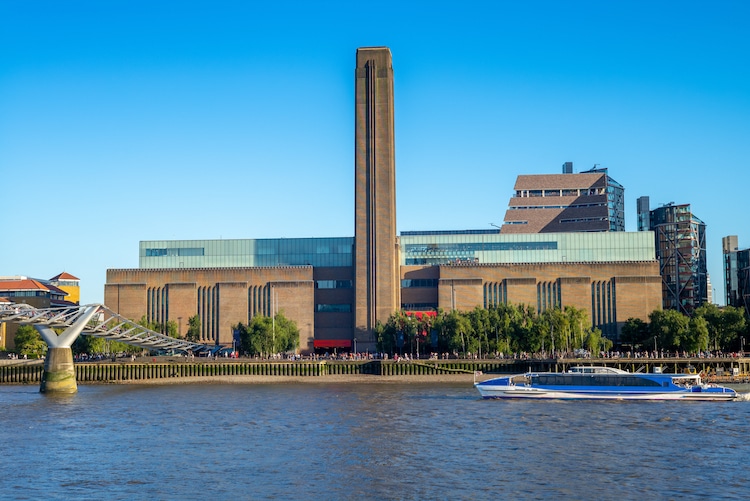
The Tate Modern (Photo: Richie Chan via Shutterstock)
Unlike the Guggenheim and the Louvre Pyramid, London’s Tate Modern museum was not built from scratch. In fact, the steel-and-brick building that exhibits this world-class art collection was an electricity generating stationuntil 2000.
The Bankside Power Station was built in the middle of the 20th century on the south bank of the River Thames. After closing in 1981, it risked demolition. However, in 1994, the Tate Gallery announced it would house its artworks, with Herzog & de Meuron architects leading its renovation.
Following its transition, the building retained much of the original architecture, including its iconic central chimney and large turbine hall. However, in 2016, an 11-story Herzog & de Meuron-designed tower called the Blavatnik Building was added to the existing site.
This new extension offers panoramic views of London while “allowing visitors to engage more deeply with art” by increasing exhibition space.
NITERÓI CONTEMPORARY ART MUSEUM
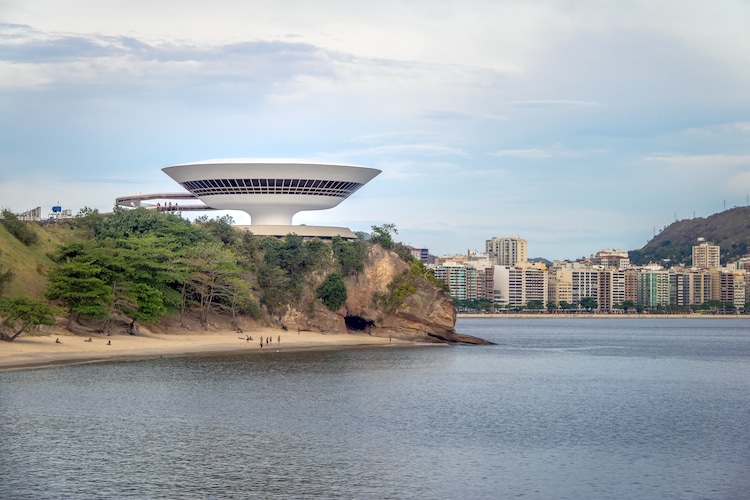
The Niterói Contemporary Art Museum (Photo: Diego Grandi via Shutterstock)
The Niterói Contemporary Art Museum is one of Rio’s most popular tourist destinations. A floating, saucer-shaped structure accessible by a large outdoor ramp and flanked by a flower-inspired reflecting pool, the museum is one of Oscar Niemeyer‘s most celebrated creations.
Known as the “Picasso of concrete,” Niemeyer is a pioneer of modern architecture and a master of abstraction. He is particularly fascinated by forms found in nature. “I am not attracted to straight angles or to the straight line, hard and inflexible, created by man. I am attracted to free-flowing, sensual curves. The curves that I find in the mountains of my country, in the sinuousness of its rivers, in the waves of the ocean, and on the body of the beloved woman. Curves make up the entire Universe, the curved Universe of Einstein.”
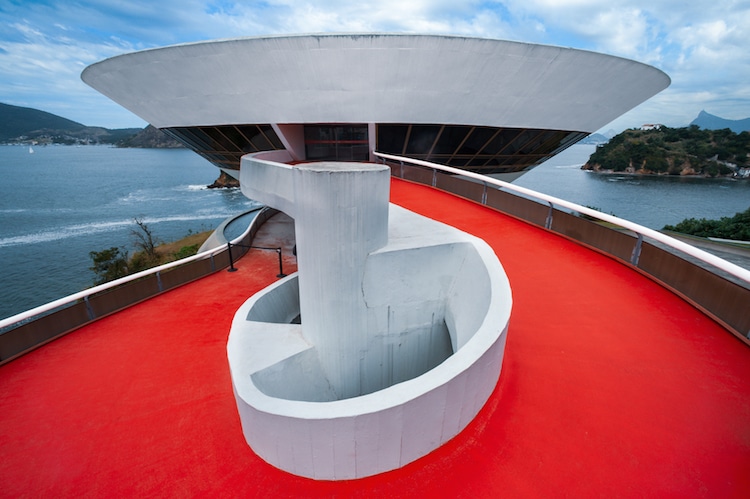
The Niterói Contemporary Art Museum entrance (Photo: Nick Albi via Shutterstock)
The out-of-this-world white concrete structure was completed in 1996 after five years of construction.
THE DENVER ART MUSEUM
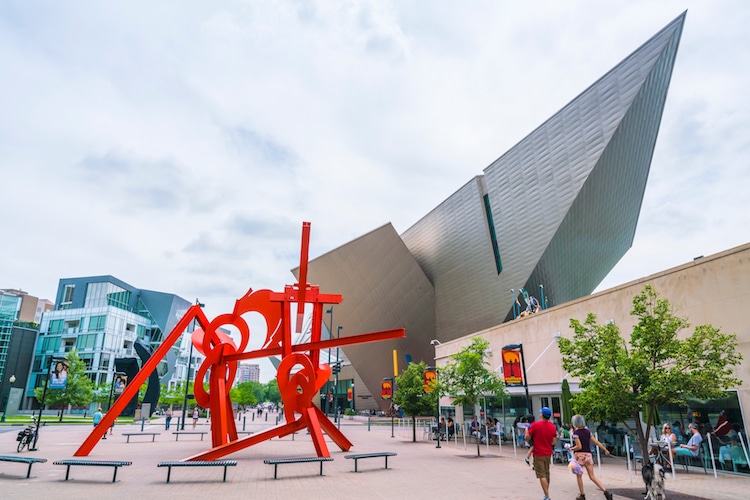
The Denver Art Museum (Photo: Checubus via Shutterstock)
The Denver Art Museum has an encyclopedic collection that spans cultures and centuries. However, the architecture of its main edifice, the Frederic C. Hamilton Building, is wildly contemporary.
The deconstructivist building was designed by Polish-American architect Daniel Libeskind and completed in 2006 . The shard-like structure features 20 topsy-turvy planes made out of titanium and steel. As these planes interact with each other, an abstract landscape forms.
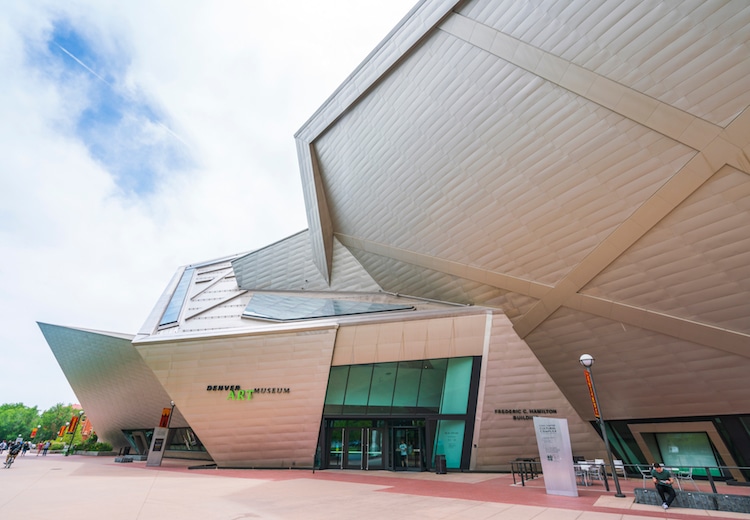
The Denver Art Museum entrance (Photo: Checubus via Shutterstock)
Libeskind explains that this nature-esque aesthetic is intentional, as he was “inspired by the light and geology of the Rockies.” Additionally, the distinctive design was influenced by the museum’s community, as he notes that another muse was “the wide-open faces of the people of Denver.”
POMPIDOU CENTER 퐁피두 센터
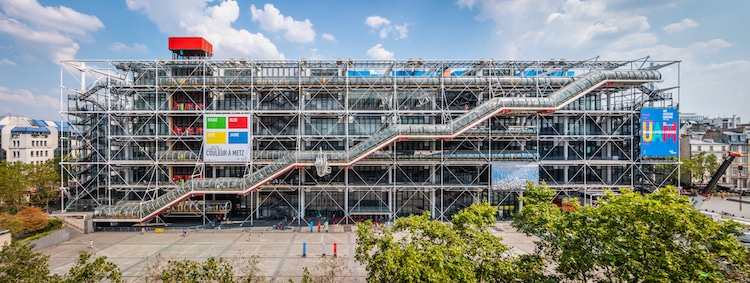
The Pompidou (Photo: Charles Leonard via Shutterstock)
The Georges Pompidou Center is Paris’ premiere destination for 20th-century art. The museum houses Europe’s largest collection of modern art, making its avant-garde architecture a perfect fit.
The museum was conceived by Renzo Piano, who was awarded the commission after winning an architectural design competition in 1971. His design featured an “exposed” exterior that reveals its inner workings in a whimsical arrangement of coded color: blue hues designate air conditioning, yellow is for electrical circulation, water pipes are green, and escalators and elevators are red.

The Pompidou (Photo: Silverbackstock via Shutterstock)
This unique approach turns the concept of the traditional museum building inside out—literally.
“On the Piazza side, and outside the usable volume, all public movement facilities have been centrifuged,” Piano said. “On the opposite side, all the technical equipment and pipelines have been centrifuged. Each floor is thus completely free and it can be used for all forms of cultural activities—both known and yet to be discovered.”
THE GUGGENHEIM MUSEUM BILBAO
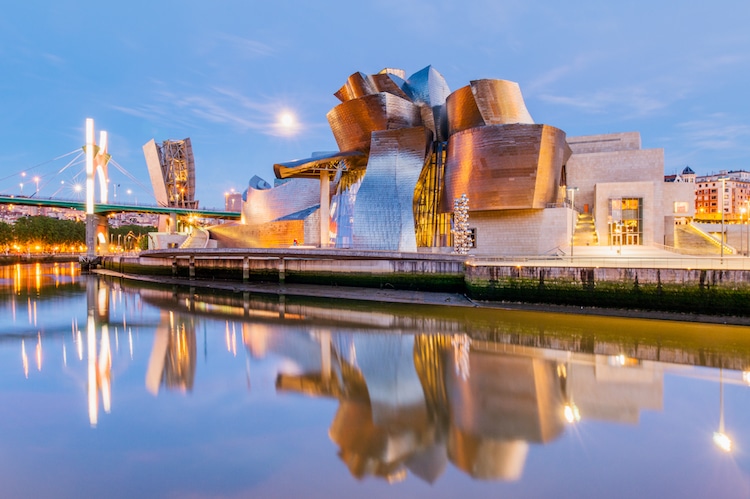
The Guggenheim Bilbao (Photo: Rudy Mareel via Shutterstock)
In 1991, the Basque government and the Solomon R. Guggenheim Foundation announced plans to build a new Guggenheim Museum along the Port of Bilbao.
Architect Frank Gehry was selected to design the building. Looking to the the local landscape for inspiration, Gehry imagined an undulating exterior that frames a flower-shaped atrium with views of the Basque hills. Furthermore, the materials used—including glass, stone, and titanium—and its deconstructed aesthetic fit in perfectly with the museum’s industrial surroundings.
Since opening to the public in 1997, the museum has garnered praise across the board. “The building blazed new trails and became an extraordinary phenomenon,” art critic Paul Goldberger said in 2009. “It was one of those rare moments when critics, academics, and the general public were all completely united about something.”
kcontents










